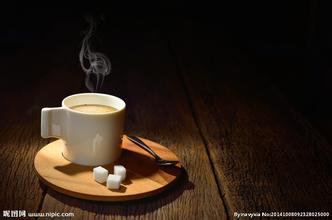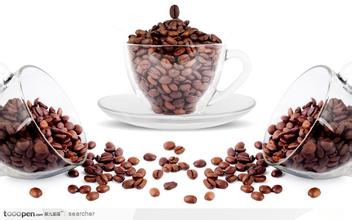Korean Coffee "flameout" Cafe looking for New Hot spot
It is not just Korean coffee that is not optimistic about development.
At the beginning of this year, Diou Coffee, which carries the memory of Zhengzhou's post-80s generation, closed its Zhenghongqi store on Agricultural Road, and its store on Jingwu Road Weisan Road has also been closed. The Shangdao coffee, Jienong coffee and cross-strait coffee, which belong to the era of Chinese coffee 1.0 with Dio, also slowly fade out of consumers 'vision with the emergence of new coffee. At the same time, in recent years, Zhengzhou has received wide attention, known as the coffee industry model of diffuse coffee, drama coffee, now also due to various objective factors, business is not as good as before.
"Today, the number of large and small cafes in Zhengzhou is huge, but the closure rate is also very high. Ninety percent of the cafes that only sell space are losing money, and many of them won't last two years." Ms. Wu, who once ran a small cafe in Zhengzhou, believes that selling coffee to make money has always been a false proposition.
Coffee, she explained, costs a lot but is extremely cheap. A $25 cup of coffee costs $3. For consumers, what they buy is decoration environment and space. Therefore, at present, Zhengzhou cafes have to spend a lot of money on creating the environment. Large space, good lot rent costs high, decoration costs are also high, investment is difficult to recover.
"The cost of this industry is only 8%, if the daily turnover is 20,000 yuan, the profit must be gratifying." But the problem is that investors haven't considered whether they can have a turnover of 20,000 in a single day."
'The profit point of the coffee industry looks beautiful,' she said,'but the unit price is low and the turnover rate is not high.' At present, Zhengzhou and most parts of China do not have enough market demand to support so many coffee shops. At present, Zhengzhou's coffee shops with a slight scale have invested more than one million yuan. In the catering industry, it is difficult to make a profit without a turnover of 5000 yuan a day for stores with an investment of 500,000 yuan. But Zhengzhou an investment of 1 million yuan ordinary coffee shop, many single-day turnover is only two or three thousand yuan. A medium-sized brand store like Coffee Companion needs at least 200 to 400 square meters. At present, the rent in Zhengzhou's core business district is at least 100 yuan per square meter. Commercial rents are also soaring year after year, with growth rates ranging from 5 to 8 per cent. Such high rental costs and upfront investment make it difficult for the coffee industry, which has few customers, to make money.
"Coffee shops should have style, decoration costs are high, and in order to spread low costs, product prices should also be increased, high prices at the same time it is difficult to attract customers, this has become an endless loop."
Mix and match, cheap coffee enters the market "waiting for the wind to come"
Is there no future for coffee in China?
"China has a trillion-level coffee market, but it hasn't developed yet." Mu Yichen, general manager of Zhengzhou District of COCO Tea Drink, said in an interview that China's current per capita annual coffee consumption is 5 cups, far lower than the level of about 300 cups per capita in Japan and South Korea, and the average value in the world is also about 240 cups. China's coffee consumption potential is huge. At present, coffee consumption in China has been growing at an annual rate of 15%-20%, and may reach the trillion-level market target within five to ten years.
"China's limited coffee consumption market has not yet reached the time when it can 'sell space'." Operators should regard coffee as a carrier and turn coffee into a spatial culture. How to effectively use the spatial effect brought by coffee is the direction that the industry is exploring at present. After Korean coffee, the next explosion in the coffee industry must be a specialty store that introduces other industries."
He introduced that now in Beijing, Shanghai, Guangzhou and other first-tier cities, cafes have been able to arrange flowers, sell toys or let cats, dogs and other pets run full of shops. Along with coffee are store features other than drinks, which are also its biggest profit points. And in Zhengzhou, such coffee shops are also brewing. For example, in a cafe around Erqi Wanda, the boss mixes clothing customization business with coffee leisure. Merchants not only increased profit channels, consumers also obtained the enjoyment of beauty.
In his view, the future Zhengzhou market or will be three mainstream coffee "sect" occupation. One category is large international chain coffee shops such as Starbucks and Pacific. These brands have strong corporate culture and brand management capabilities, and also have a considerable number of customers, and the market potential is still huge. One type is the above-mentioned cross-border specialty cafe. For the generation of post-80s and post-90s with unique aesthetic and petty bourgeois consumption needs, cafes are not only places for conversation and chat, but also spaces for leisure and personal characteristics. There's a lot more to dig up in the coffee space. There is also a category of coffee to meet the general demand, the unit price of 10 to 15 yuan per cup of cheap coffee. As the younger generation born in the Internet era gradually becomes the mainstream of consumption, China's coffee demand will expand rapidly, and low-priced takeaway coffee will also be favored.

Important Notice :
前街咖啡 FrontStreet Coffee has moved to new addredd:
FrontStreet Coffee Address: 315,Donghua East Road,GuangZhou
Tel:020 38364473
- Prev

How to build a coffee shop with its own characteristics
First, do not do everything. The reason why many cafes fail is that operators want to do everything from the very beginning. They want to provide customers with the most comprehensive range of goods and services as diverse as possible. But every operator has no way to sell the highest quality coffee and service at the lowest price. So don't do everything, don't try to satisfy everyone.
- Next

Flavor description of Yunnan Tieka Coffee beans introduction to the characteristics and quality of the manor area
Flavor description of Yunnan Tieka Coffee beans introduction to the characteristics and quality of the manor production area so when Nestl é succeeded in popularizing new varieties with high yield in Pu'er area in the 1990s, brown farmers in Baoshan area also cut off old varieties and changed to new varieties one after another. with a round of coffee expansion, new varieties are increasing, old varieties are decreasing, and finally to today's situation: old varieties are almost
Related
- Beginners will see the "Coffee pull flower" guide!
- What is the difference between ice blog purified milk and ordinary milk coffee?
- Why is the Philippines the largest producer of crops in Liberia?
- For coffee extraction, should the fine powder be retained?
- How does extracted espresso fill pressed powder? How much strength does it take to press the powder?
- How to make jasmine cold extract coffee? Is the jasmine + latte good?
- Will this little toy really make the coffee taste better? How does Lily Drip affect coffee extraction?
- Will the action of slapping the filter cup also affect coffee extraction?
- What's the difference between powder-to-water ratio and powder-to-liquid ratio?
- What is the Ethiopian local species? What does it have to do with Heirloom native species?

